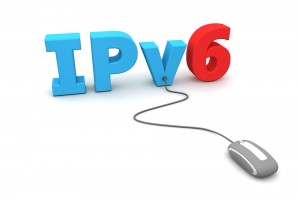IP Version 6: are you ready for the future?
 When the internet was first created, assumptions on its future success were very conservative, to say the least. And if there is anything wrong with the IT industry as a whole, it is the inability to predict its own unstoppable progress.
When the internet was first created, assumptions on its future success were very conservative, to say the least. And if there is anything wrong with the IT industry as a whole, it is the inability to predict its own unstoppable progress.
Equipment that is connected to the internet communicates by means of a number of Internet Protocol (IP) addresses. As the four groups of three digits are difficult to remember, we commonly use Uniform Resource Locators (URLs for short). For example https://www.google.co.uk is translated into 216.58.210.3. This addressing system, in theory, provides a little more than four billion IPv4 addresses.
Addressing the situation
A number of decades ago, it was signalled that these four billion IP addresses were simply not going to be enough. The issue was the future lack of publicly visible IP addresses, also known as ‘IPv4 Exhaustion’. As a result of this, systems were developed to reuse IP addresses in private networks. This works in the same way as an office with employees; Royal Mail does not deliver to the actual employee, but rather to the office address. The letter will subsequently be delivered through the internal mail system, but the address in the building does not have to be unique.
In many companies, mail is also security screened and only delivered if it is of genuine importance. Our current internet addressing works in a similar way. We deliver ‘packets’ between public addresses and forward to an internal address if deemed relevant. This has made the internet much more secure as static public IP addresses can be a hacker’s dream. It is a shame that we do not use dynamically changing addresses for physical post, because if we did, we would receive so much less unwanted marketing mail each day.
However, it seems we have only delayed the inevitable, as we are still experiencing a shortage of IP version 4 addresses. Many people put their head in the sand and stick their fingers in their ears, hoping the problem will go away. Well the fact is, it won’t. For every IP being issued unnecessarily today, connections in the future will be of very limited availability.
Future proofing
To ensure that the internet does not grind to a standstill, IP version 6 was developed. Lessons learned, this system will allow for 340 undecillion (that’s 340 followed by 36 zeroes) addresses and it is very unlikely we will ever need that many. The big challenge is to make the IPv4 network work in conjunction with IPv6. This takes time and therefore we have to be concerned and make sure that:
- As Internet Service Providers, we do not issue public IP addresses unnecessarily. In many cases there is no need and it exposes your network to the outside world, thus making it vulnerable to hacking
- Our ISPs “re-harvest” any unused IP addresses and re-issue them for new connections. Any ISP that does not have such a policy, is best to be avoided as you may wish to expand your network but find yourself unable to do so
- Any solution that you procure today should support both IPv4 and IPv6 so the transition period is gradual
- Your ISP has strong IPv4 and IPv6 peering credentials and has the knowledge and skill to help you prepare for IPv6.